QuestionI have a malti poo she is almost 9 months. She digs holes if I leave her out in the yard for more then 15 minutes (anyway to stop this?) She is mostly indoor dog, though she roams on my back porch, but after a while on the porch she will eat the dirt from the plants that are planted in pots.
Main problem now is she is licking the walls, wood crevices, wood furniture and sometimes the paint comes off and she starts knawing the wood and eating wood. I have always had a problem keeping her from eating sticks. She also trys to eat plastic, glass, etc. I see her almost choking a few times and have had to go in her mouth a number of times to try to get things out.
I feed her Innova dog food twice a day and the add some soft food to it (a tablespoon of "ultra" for puppys.
I am not sure if you also know about grooming, but I am curious if it is better to have them short haired or close to shave for summer heat (I live in Austin texas)?
AnswerIf your dog is mostly inside, Cindy, then I wouldn't recommend shaving her completely down for summertime. Not to mention a dog's coat serves not only to insulate from the cold, but from the heat as well - and it also protects from sunburn. Do keep her neatly groomed, though, so she doesn't develop mats. If you brush her daily, then you shouldn't have to take her but maybe once a month to the groomers to be trimmed up and have her nails cut.
Puppies are like human children in that everything goes right into their mouths. This is how puppies learn about the world. Her age indicates to me that she's probably going through teething phase #2 (you thought you were all done with teething, didn't you?!). During the second teething phase is when the back teeth come in. With some puppies, you never even notice, but with others, they can be worse than they were during the first teething phase!
Make sure she has plenty of teething toys to chew on (A kong with cream cheese, peanut butter, liver mush, plain yogurt, or canned dog food smeared on the inside and then frozen is WONDERFUL). When you cannot keep an eye on her; ie: when you leave, and at night, she needs to be put in a crate with at least one of these chew toys so she cannot chew on things she shouldn't.
Do not leave her outside unattended; you need to be nearby so you can correct her for digging or chewing. If your porch is covered, you might want to consider getting an X-pen to contain her to an area of the porch where there are no plants, and the pen itself will keep her from being able to chew on the railings, etc. She gets bored out there alone, and that is why she starts trying to amuse herself by digging and chewing.
Inside the house, use baby gates to keep her from wandering off and chewing on something out of sight, and you might want to try spraying some Bitter Apple or Bitter Lime spray on the wall and other things that she likes to chew on inside. To teach her how to react appropriately to the taste, spray it on a cotton ball until the cotton ball is saturated, but not dripping wet. Offer it to her as if you were giving her a treat. She should immediately take it into her mouth, and should spit it out. When she spits it out, you should praise her and pet her. Then repeat until she will not take the cotton ball at all. This teaches her to associate the smell of the spray with the awful taste, so she should not even try to put her mouth on things that smell like the spray. For a while, you should reapply it daily to those items, until she is no longer showing interest in wanting to chew on them.
You might also want to start teaching her to spit things out of her mouth on command, just in case she ever happens to get ahold of something dangerous. This is usually very easy. It requires 2 toys that she likes to play with, and a pocketful of treats that she also really likes. You should also have her dragging a leash no longer than 4 feet (ideally one that is a foot long would work best, but if you can't find one that short, a 4 foot long one is fine). At first, you will not be doing anything with the leash, but later, you will be using it for corrections, so she needs to get used to it being there. For these training sessions, go ahead and get her a small choke chain collar and hook the leash to both rings so if she steps on it, it will not tighten. Put it on about 10 minutes before you begin, and leave it on her about 10 minutes after you finish - UNDER SUPERVISION. Do not leave the choke chain on her if you can't watch her because it could snag on something. I usually never suggest choke chains because they can be harmful if not used properly, but for the very small amount of 'force' that you're going to be using later on for corrections, I do not think a prong collar would be necessary (unless she just does not respond to the correction from the choke chain unless you yank her across the floor - THEN I would recommend getting her a prong collar). When picking out a choke chain, take her exact neck measurement and add 2. That is the length of chain you should buy. So, for example, if her neck measures 8 or 8 1/2 inches around, get a 10 inch long chain. You don't want or need a lot of 'play' in the collar when it's on her neck. It should fit snugly over the biggest part of her head. You should also get the smallest link size possible. That should be "fine" or "extra fine." You'll need to get this collar from Superpetz, Pet Supplies Plus, or another pet specialty store and not from Wal-Mart or K-mart, because usually places like Wal-Mart do not have the extra small collars for toy dogs.
To fit the collar, hold it so that it forms a "P" and, with her facing you, slip it on over her head, so that the part of the chain that forms the 'leg' of the "P" is on the top of her neck, with the 'foot' on the right side of her neck. The following links show pictures of a choke chain fitted correctly:
http://101-dog-training-tips.com/doggie/Collar_On_Right_way.jpg
http://www.abtcc.com/performance/CorrectCollar.jpg
If the "live ring" comes up from under the chin, the collar is on backwards and when it is tightened, will not release.
What you do is begin by playing with her with one of the toys. Keep the other toy hidden underneath you or somewhere where she can't see or get to it, but you can easily grab it. After a few minutes, when she is next to you with the toy, offer her a treat and as soon as she opens her mouth to take the treat, you should say whatever command you are going to be using. Here is a short list of commands to choose from:
"out"
"drop it"
"give"
"phooey"
"spit it out"
"leave it"
Of course, you can use whatever command you want, but when you pick one, stick to it. Don't tell her to "drop it" one time and "spit it out" the next. You must be consistent or she will get confused.
So you offer her the treat, say "Out" or whatever command you have chosen, as she opens her mouth to take the treat, and the toy of course drops out of her mouth. Give her lots of verbal praise and get the 2nd toy and toss it for her, and when she goes to get it, hide the 1st toy. Repeat.
Eventually, you can give the "out" command before showing her the treat and she will automatically drop the toy from her mouth. Then you can start applying it to other toys, and then to things like sticks, leaves, etc. Until you get to the point where she will drop a stick or piece of plastic or whatever, continue to ALWAYS give her a treat, along with verbal praise, for obeying. If she doesn't drop the toy/item, you should tell her "NO." in a stern tone of voice, and gently jerk the leash forward, towards her muzzle. Don't jerk so hard that you yank her forward, but jerk just hard enough to get your point across and make her obey. At this point she should know what the command means, and is choosing not to listen, which is not an option.
You can then begin to gradually phase out the treats; start treating randomly, but keep the verbal praise coming. You should *always* praise your dog for doing what she's told, even if you don't have a treat to give her. My oldest dog is 4, and I still praise her for following commands, even though I never have to correct her for disobeying anymore. Praise is just as important (and often more important) as corrections.
Good luck and please let me know if there's anything else you need help with!
Kristen

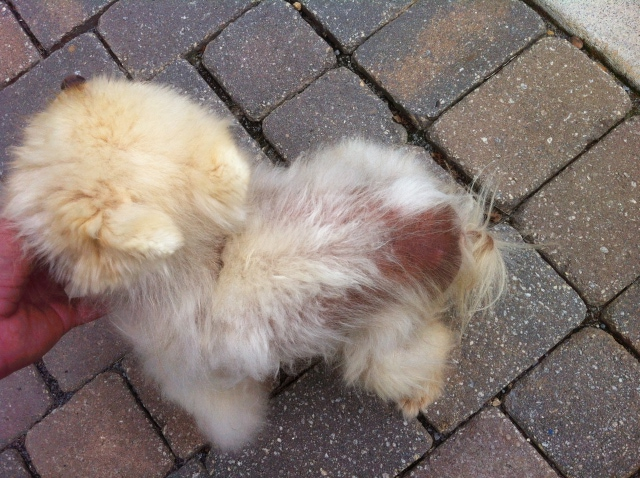 Hair growth stimulation
Question
Hairless Pom
A few years back I cut my
Hair growth stimulation
Question
Hairless Pom
A few years back I cut my
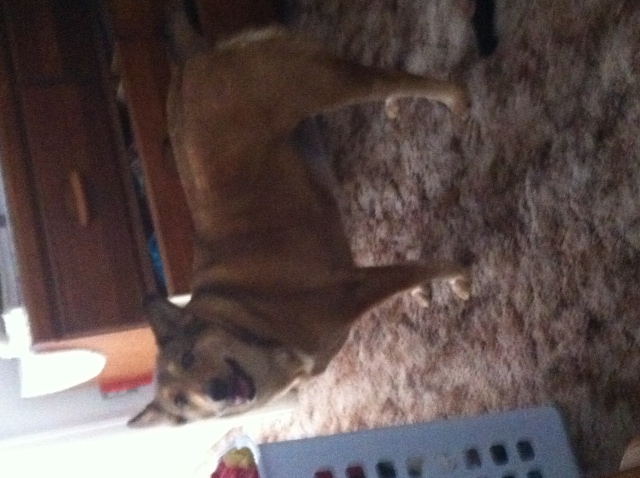 My very overly protective puppy
Question
Marla :)
Hello! I adopted a four year o
My very overly protective puppy
Question
Marla :)
Hello! I adopted a four year o
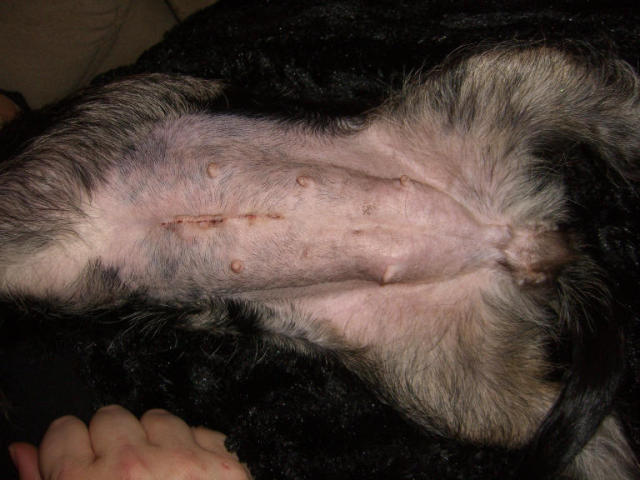 Dachshund spay - swollen mammaries
Question
Lilly
Hi Patti,
We took our 10 month old mini
Dachshund spay - swollen mammaries
Question
Lilly
Hi Patti,
We took our 10 month old mini
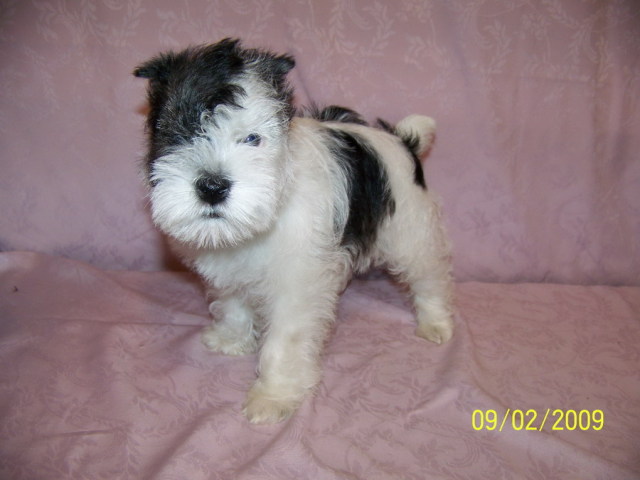 Eye problems w/ schnauzers
Question
Mini parti schnauzer
We currently have a 14 yr
Eye problems w/ schnauzers
Question
Mini parti schnauzer
We currently have a 14 yr
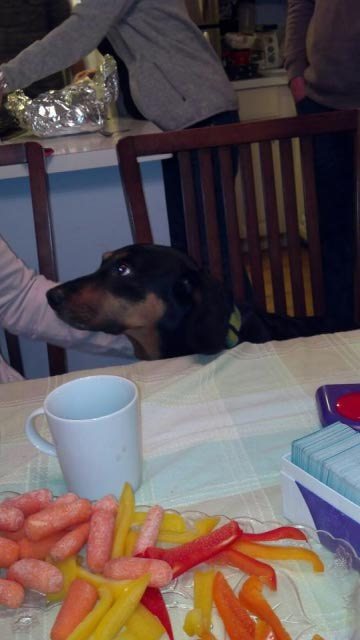 Gnawing/ Uncontrollable Itch
Question
Burgess
My wonderful dog Burgess, A Dac
Gnawing/ Uncontrollable Itch
Question
Burgess
My wonderful dog Burgess, A Dac